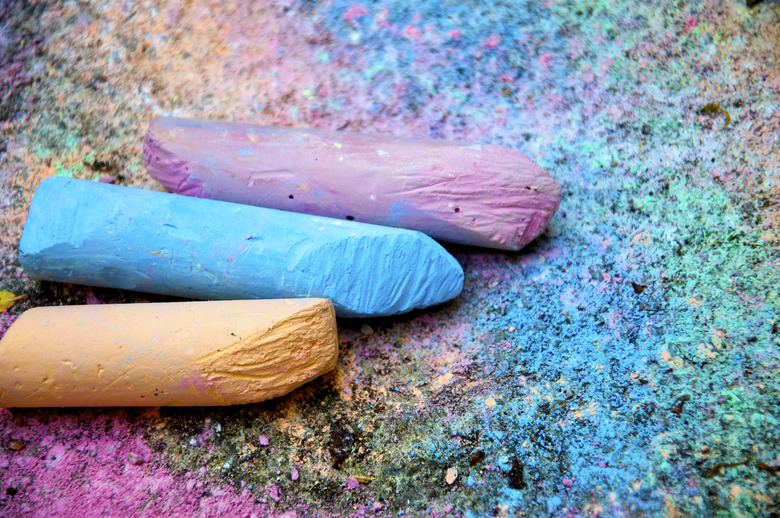Chalk And Vinegar Science Projects
The main purpose of performing science experiments with chalk and vinegar is to explore the effects of acid rain on rock. Chalk is made from limestone, which is made mostly of calcium carbonate. Vinegar is an acid that simulates the effects of acidic rain more quickly than naturally occurs in nature, allowing you to observe the process in a shorter period of time.
Observation
Observation
To simply observe the acidic vinegar eroding the chalk, place a piece of white chalk in a small cup of vinegar. The chalk doesn't need to be entirely submerged for the experiment to work. Over the next few days, check on your experiment every few hours, taking photos or notes of your observations. Notice how quickly the vinegar dissolves the calcium carbonate and how much sediment is building up in the bottom of the glass. The chalk may completely dissolve within a few days.
Acidity Comparison
Acidity Comparison
Compare acidity levels of different liquids by performing the same experiment with several samples. Use vinegar in one glass and water in another, and prepare other glasses containing lemon juice, vegetable oil, soda and other liquids to test. Put a piece of chalk in each glass, and observe the glasses every few hours to see which liquid is dissolving the chalk the fastest and which is dissolving the chalk the slowest. The more acidic the liquid, the faster the chalk with dissolve.
Mineral Comparison
Mineral Comparison
Acid rain has a different effect on different types of rock, depending on its chemical composition and hardness. Gather samples of several kinds of rock and minerals, including limestone (your chalk). Place each sample in its own glass of vinegar. Check back occasionally over the next few days to observe what is happening to each sample. Record which rocks and minerals are breaking down more quickly or slowly due to the vinegar, and compare the results to the chalk.
References
Cite This Article
MLA
Roberts, Anna. "Chalk And Vinegar Science Projects" sciencing.com, https://www.sciencing.com/chalk-vinegar-science-projects-7188192/. 13 March 2018.
APA
Roberts, Anna. (2018, March 13). Chalk And Vinegar Science Projects. sciencing.com. Retrieved from https://www.sciencing.com/chalk-vinegar-science-projects-7188192/
Chicago
Roberts, Anna. Chalk And Vinegar Science Projects last modified August 30, 2022. https://www.sciencing.com/chalk-vinegar-science-projects-7188192/
